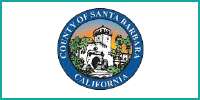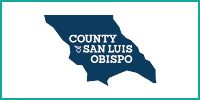This could be an overwhelming time for you, but don't stress too much about it! It'll all be worth it in the end! 
 College To Do List
College To Do List
⇒ Maintain good grades — 85 or better!
⇒ Join a school club or team
⇒ Mark important dates on calendar — meet all deadlines
⇒ Register for SAT/ACT, or Take or Retake SAT/ACT
⇒ Request admission info from colleges
⇒ Attend college fairs
⇒ Make college choices
⇒ Ask for letters of recommendation
⇒ Write application/scholarship essays
⇒ Fill out college applications
⇒ Complete the Free Application for Federal Student Aid (FAFSA)
⇒ Record financial aid awards from schools where you have been accepted
⇒ Record any honors you’ve received
|
AUGUST
⇒ Register for the September ACT if appropriate
⇒ Come up with a preliminary list of
colleges that includes reach, match
and safety schools.
⇒ Explore the websites of the colleges that interest you to learn about admissions requirements.
⇒ Check your senior year class schedule to make sure you're taking the English, Math, Social Science,
Science, and Foreign Language classes you'll need for your top-choice colleges.
⇒ Visit campuses and interview with college representatives if appropriate.
|
SEPTEMBER
⇒ Register for October or November SAT & SAT Subject exams.
⇒ Meet with your guidance counselor to discuss the college to which you're thinking of applying.
⇒ Request letters of recommendation, especially if you're applying early.
⇒ Continue to visit campuses and itnerview with college admissions representatives.
⇒ Create a chart of deadlines.
⇒ Begin looking for scholarships.
|
OCTOBER
⇒ Take the SAT I and/or SAT II exams, if necessary.
⇒ Continue to research schools to narrow your list to roughly 6-8 schools.
⇒ Take advantage of college fairs and virtual tours.
⇒ Complete application if you are applying early decision or early action.
⇒ Research financial aid and scholarships.
⇒ Get your college essay in shape. Get feedback on your writing from a guidance counselor and a teacher.
|
NOVEMBER
⇒ Register for the December SAT/ACT, if applicable.
Take the November SAT, if
applicable.
⇒ Don't let your grades slide!
⇒ Make sure you've submitted
all components of your applications
if you are applying to colleges with November deadlines for early decision or preferred application.
⇒ Put the final touches on your application essays, and get feedback.
⇒ Continue to research scholarships.
|
|
DECEMBER
⇒ Complete your applications for regular admissions.
⇒ Make sure you've had your test scores sent to all colleges that require them.
⇒ Apply to outside funding and/or scholarships.
⇒ PARENTS: Gather your income tax returns or save your year-end payroll stub if it shows your earnings for the year.
|
JANUARY
⇒ PARENTS: Get your income tax returns prepared early for the FAFSA.
⇒ Submit your completed FAFsA to the processor as soon after January 1st as possible.
⇒ Keep copies of all forms you submit.
⇒ Continue your scholarship search.
|
FEBRUARY
⇒ Make sure your mid-year transcripts have been sent to the schools to which you have applied.
⇒ Submit your FAFSA by February 15th to qualify for institutional awards.
⇒ Rank your final list of colleges.
|
MARCH
⇒ Look for your Student Aid Report (SAR) which contains federal Pell
Frant Program inforamtion.
⇒ If verification's required, submit tax forms to the financial aid office.
⇒ Contact each office to make certain that your application is complete.
⇒ If you have not received your SAR withing 4 weeks of sending in your FAFSA, contact the Fereral Student
Aid Information Center at 1-800-433-3243
|
|
APRIL
⇒ Watch the mail for college acceptance letters. Compare the financial aid awards you receive.
⇒ Make your final decision.
⇒ Watch for important deadlines at your college of choice (housing, financial aid, etc.)
|
MAY
⇒ May 1st is National Candidates Reply Date.
⇒ Request final transcript to be sent to your college of choice.
|
|
|

 College To Do List
College To Do List



